|
|
|
|
| Home > Reviews > Small Scale > IBG Models Kit No. 72122 - M11/39 Italian Medium Tank |
M11/39 Italian Medium Tank
IBG Models, 1/72 scale
Reviewed by Brett Green

| Stock Number and Description | IBG Models Kit No. 72122 - M11/39 Italian Medium Tank |
| Scale: | 1/72 |
| Media and Contents: | 52 parts in grey plastic; 10 photo-etched parts on one fret; markings for three vehicles. |
| Price: | 17,00 € plus shipping available online from IBG Models' web store £16.60 UK Price (£13.83 Export Price) plus shipping available online from Hannants and other specialist model retailers online and worldwide |
| Review Type: | FirstLook |
| Advantages: | High level of detail and moulding; clever running gear breakdown including integrated wheels and tracks; photo-etched parts included; good quality decals. |
| Disadvantages: | None noted. |
| Recommendation: | This is a simple but well-detailed kit of this widely-used WWII Italian tank. I particularly like the clever engineering of the tracks and running gear. |
Background
The Carro Armato M11/39 was an Italian medium tank first produced prior to World War II. The M11/39 saw service in Africa and Italy from 1939 to as late as 1944.
The M11/39 was developed as a breakthrough tank.
The design of the M11/39 was influenced by the British Vickers 6-Ton. This influence is reflected particularly in the track and suspension design. A novelty of the design was the placement of the final reduction gears inside the front-mounted drive sprockets, eliminating the need for enlarged final drive housings in the bow armour.
Service use of the M11/39 was short due to several deficiencies in its design, particularly the placement of the main 37 mm gun in the hull. The design concept was to use the main gun against other tanks and to defend the tank with the turret armament. The gun was in a fixed position with traverse restricted to 15° to port and starboard. Dual 8 mm machine guns were housed in a small rotating one-man turret, with manual controls.

The original intent was to place the 37 mm /L40 armament in the turret but there was insufficient space. The gun placement followed the French Char B1 and anticipated the early versions of the Churchill tanks, although in these tanks the hull guns were howitzers, rather than high-velocity guns.
The M11/39 had other shortcomings: its endurance and performance were poor, it was relatively slow, it was mechanically unreliable and its 30 mm maximum riveted steel armour, designed to withstand 20 mm fire, was vulnerable to British 2-pounder guns at any range at which the M11/39s main gun was effective.
The tank was designed to carry a radio but none were fitted to the production vehicles.
The M11/39 hull was modified for use its successor the Fiat M13/40, which had the main gun in the turret; an order for 100 M11s was placed as a stop-gap.*
FirstLook
I believe that this is the first 1/72 scale injection moulded plastic kit of the M11/39 tank.
IBG's M11/39 Italian Medium Tank comprises 52 parts in grey plastic, 10 photo-etched parts on one fret, and markings for three vehicles.
The kit is moulded in a smooth, satin finish medium grey plastic. They are flawless as far as I can see. Detail is crisp, subtle and convincing. Raised rivet heads, recessed panel lines, hinges and other structural features are all there in glorious small scale.

Parts are attached to the sprues with moderately narrow strips.
The lower hull sides, bottom and front are moulded as a single part.
The upper hull is made up from three main piece – the main upper hull, the superstructure and the engine deck (with some really finely moulded grilles) and a blank centre.
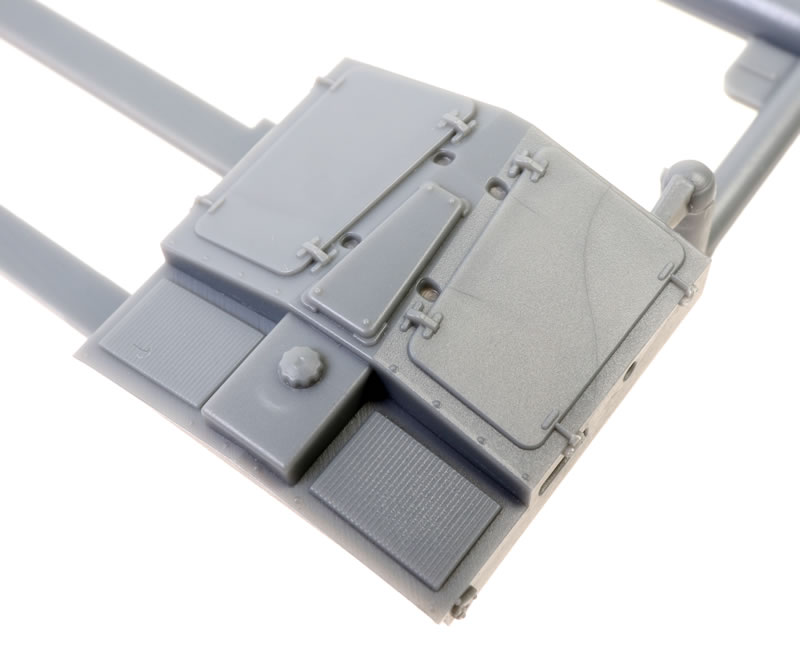
The hull superstructure is moulded as one piece.

I appreciate the lack of “flat pack” here.

It looks like the turret machine guns will be able to elevate and depress after assembly. The main gun will be able to traverse.
The main gun's barrel is hollowed out at the end - impressive for this small scale.

Assembly begins with the running gear and tracks. These have been thoughtfully designed for speed and ease of assembly with no compromise in detail. The tracks are moulded as one part with the inner row of road wheels, return rollers, idler wheel and drive sprocket.
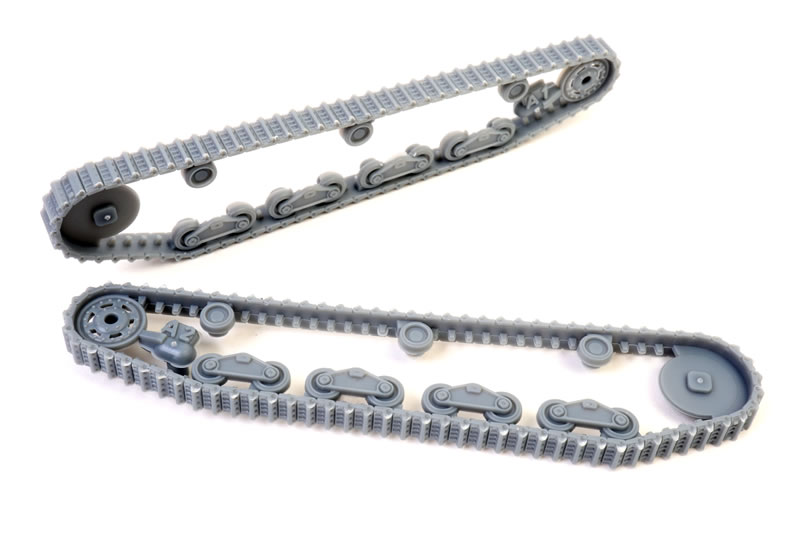
Track thickness is acceptable and detail is terrific. Each link features recessed holes representing track pins.
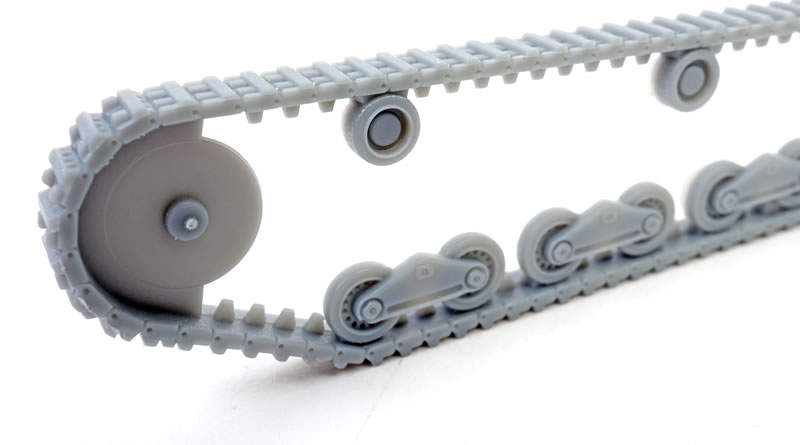
The bogie trucks are moulded as one main piece each. The only bits missing are the two inner wheels and their connecting mounts that are attached to the tracks. The road wheels and springs are well detailed with raised rims, small even perforations on the wheel hubs and locking nuts.
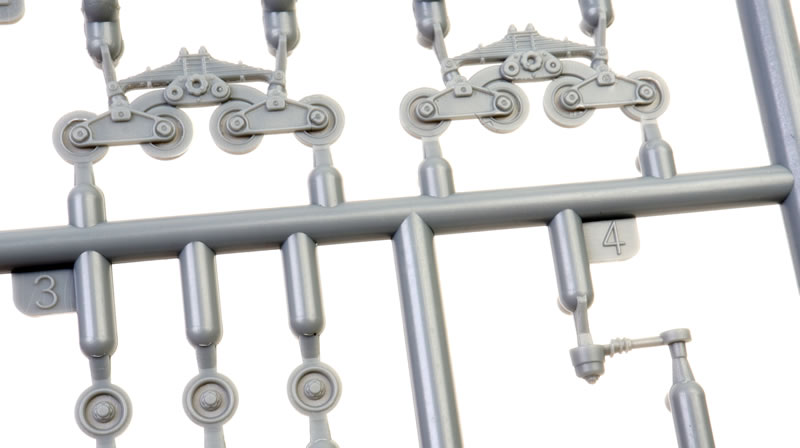
The idler wheel and drive sprocket parts are attached to the track assembly. The drive sprocket teeth that correspond to the track are not present, making it easier and more precise to line up the tracks with the sprockets.
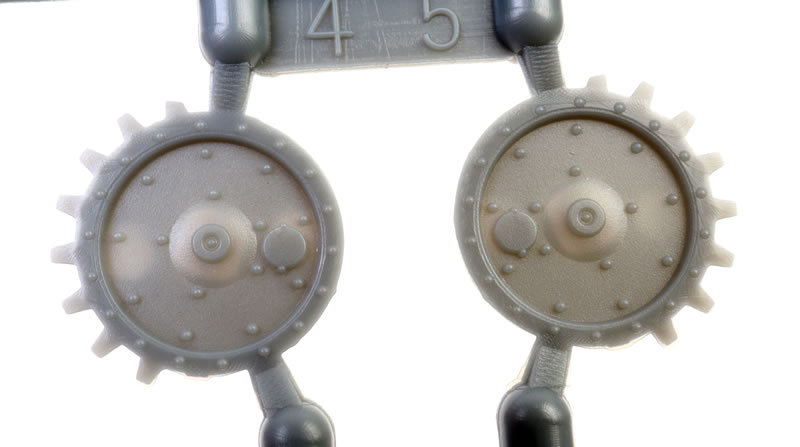
Detail parts including foot holds, handles and more are included on the photo-etched fret. They are not too tiny – should be manageable for a moderately experienced small-scale modeller.
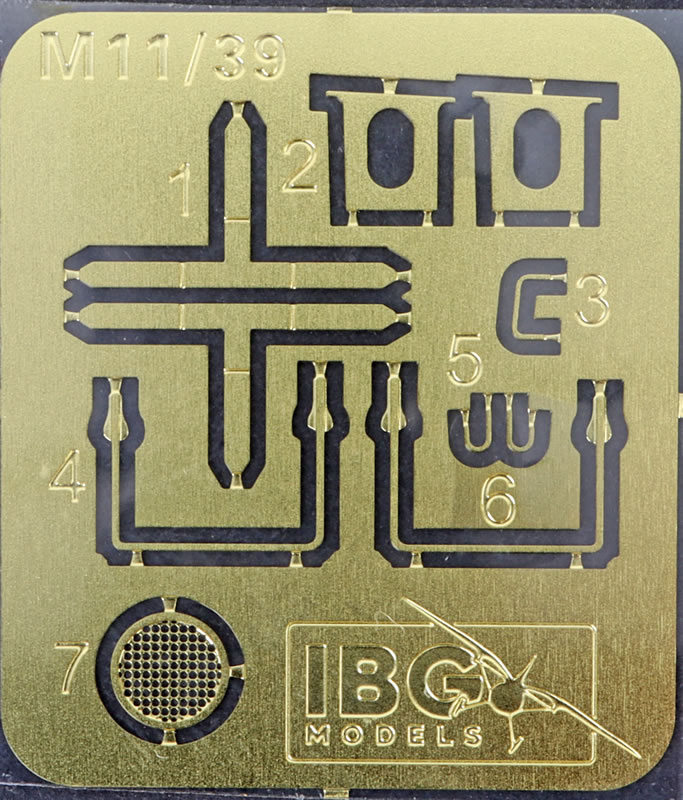
Tools and spare wheels are supplied in plastic for the upper hull.
Hatches may be posed open but no figures are supplied.
Markings are supplied for four vehicles on one decal sheet printed by Techmod.
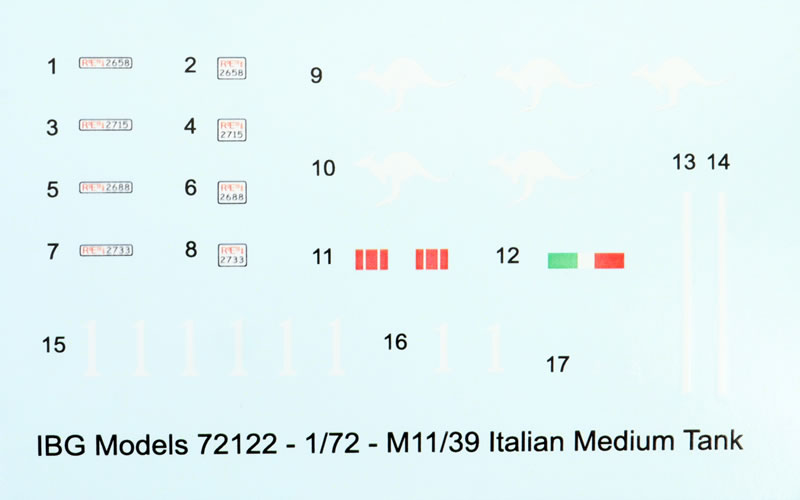
A supplementary sheet with kangaroos is also provided for the captured Australian option.
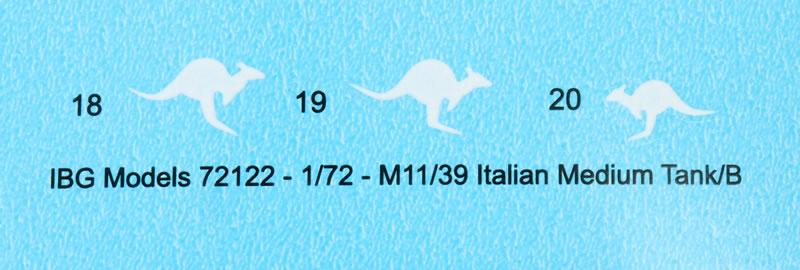
Conclusion
This is a simple but well-detailed kit of this widely-used WWII Italian tank. I particularly like the clever engineering of the tracks and running gear.
* Historical summary adapted from Wikipedia
Thanks to IBG Models for the sample
Text and
Images by Brett Green
Page Created 12 October, 2024
Page Last Updated
12 October, 2024








